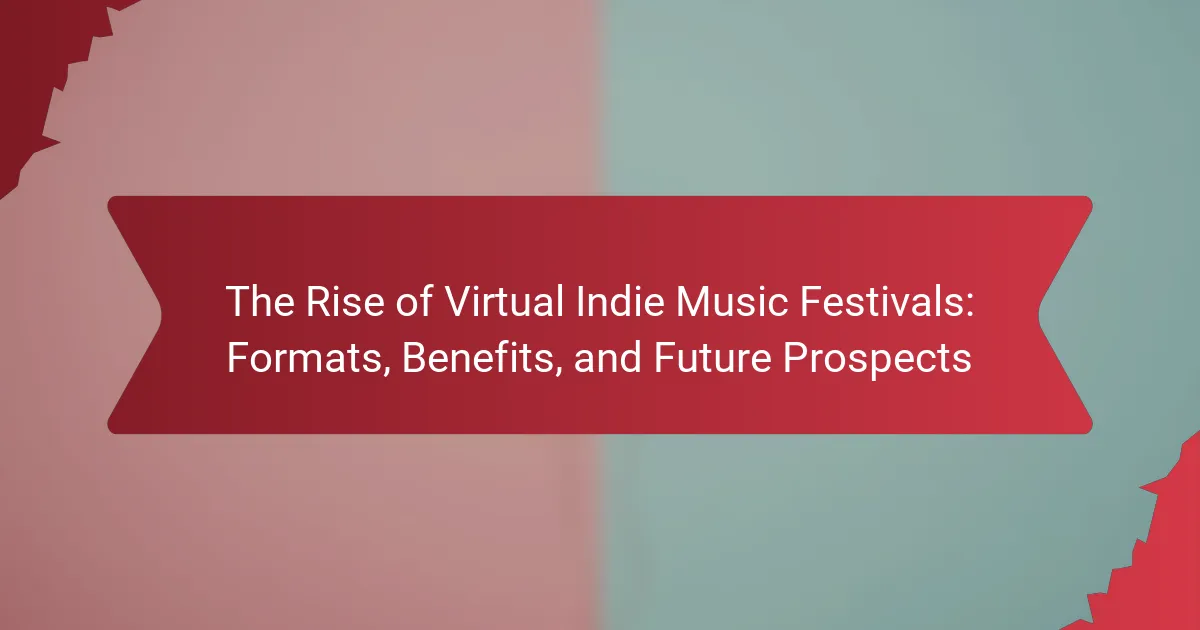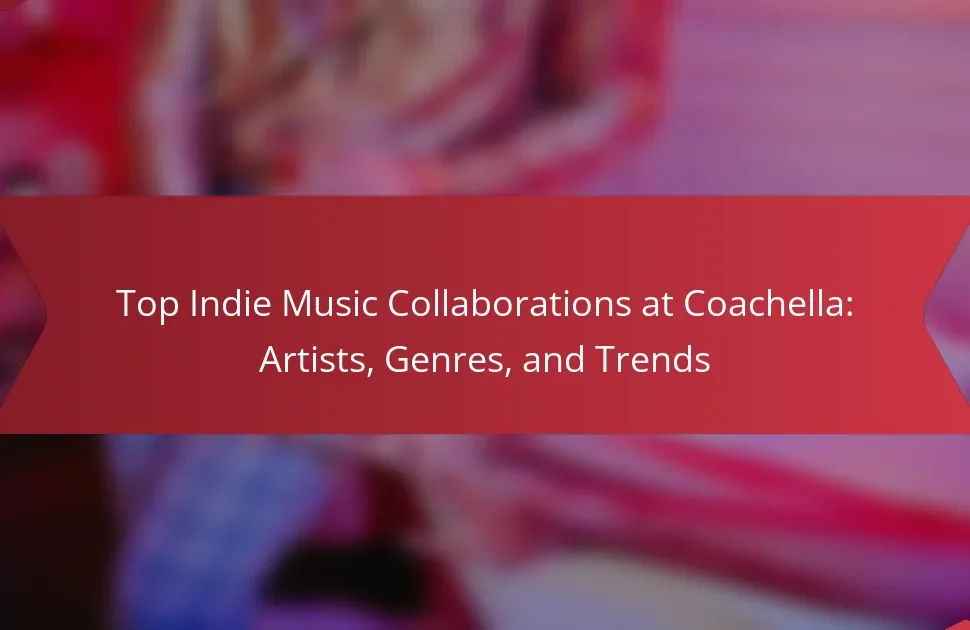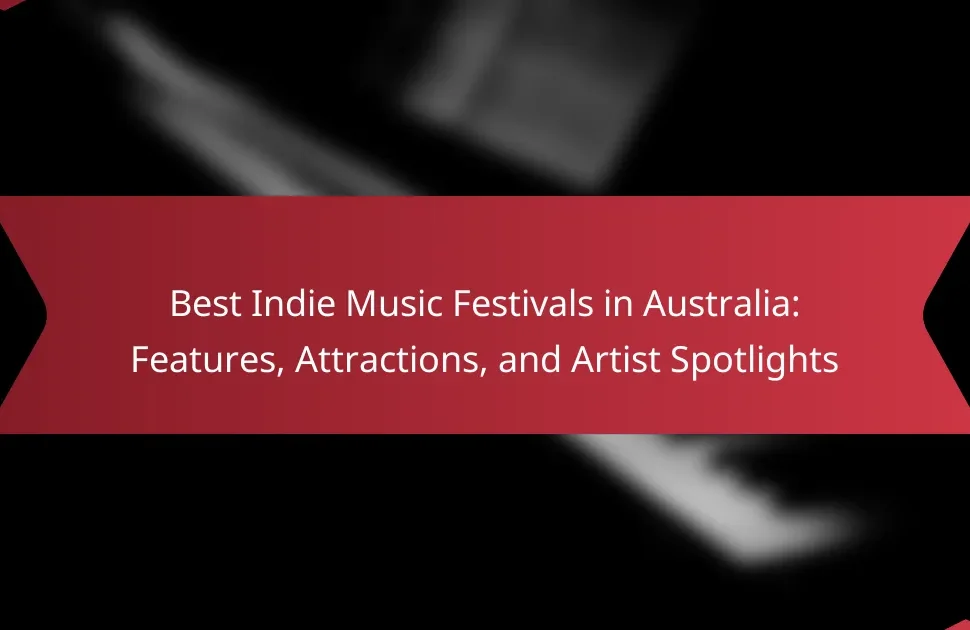Virtual indie music festivals are transforming the music landscape by offering increased accessibility and engagement for artists and audiences. Key formats include live streaming, pre-recorded sets, and interactive experiences. These festivals provide unique benefits such as broader audience reach and innovative collaboration opportunities. Looking ahead, advancements in technology like virtual reality promise to further enhance the festival experience.
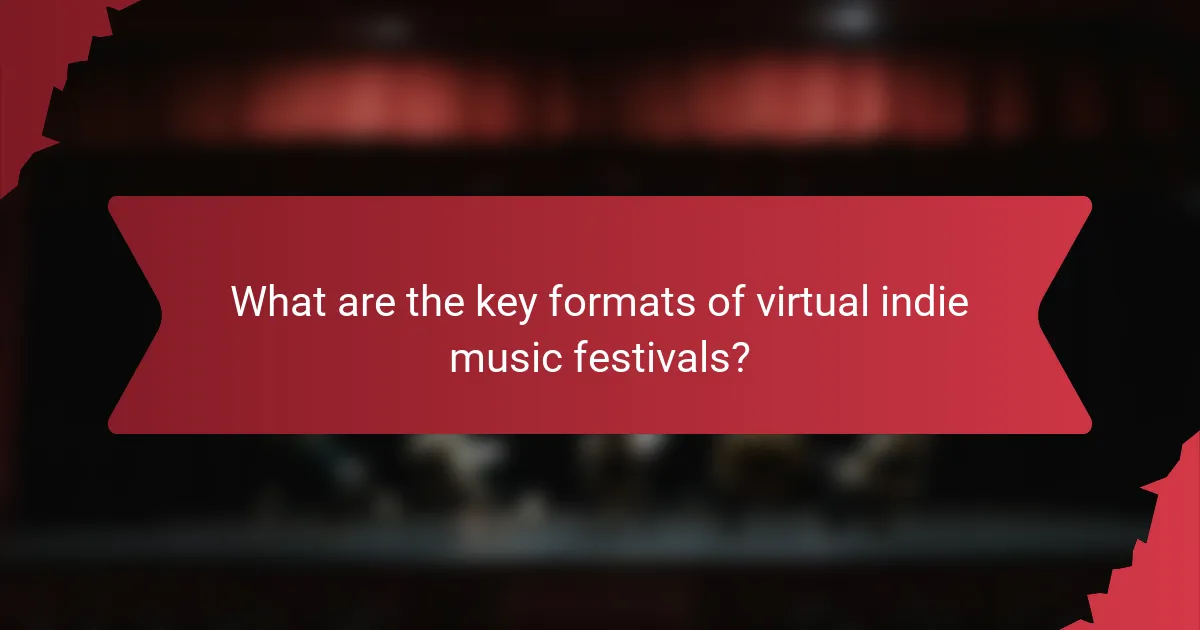
What are the key formats of virtual indie music festivals?
The key formats of virtual indie music festivals include live streaming performances, pre-recorded sets, interactive experiences, and virtual reality environments. Each format offers unique engagement opportunities for audiences and artists alike. Live streaming allows real-time interaction, while pre-recorded sets provide flexibility in scheduling. Interactive experiences foster community through chat and social media integration. Virtual reality environments create immersive experiences, enhancing the overall festival atmosphere. These formats reflect the evolving landscape of music festivals in a digital age.
How do live streaming and on-demand formats differ?
Live streaming offers real-time interaction, while on-demand formats provide flexibility for viewers. Live streaming creates a sense of urgency and community, enhancing audience engagement. In contrast, on-demand allows audiences to consume content at their convenience, catering to diverse schedules. Both formats serve unique purposes in the context of virtual indie music festivals.
What platforms are most popular for hosting these festivals?
The most popular platforms for hosting virtual indie music festivals include YouTube, Facebook Live, Twitch, Zoom, and specialized festival platforms like Veeps. These platforms provide extensive reach and interactive features, enhancing audience engagement. YouTube offers high visibility, while Twitch caters to gaming and music audiences. Facebook Live enables community interaction, and Zoom facilitates intimate performances. Veeps focuses on ticketed events, providing artists with revenue opportunities.
Which interactive features enhance audience engagement?
Interactive features that enhance audience engagement include live chat, virtual meet-and-greets, interactive polls, and social media integration. These elements create a dynamic experience, allowing attendees to connect and participate actively. For example, live chat fosters real-time communication, while polls encourage audience feedback and involvement. Additionally, virtual meet-and-greets provide personal interactions with artists, enhancing the festival experience. Social media integration allows for sharing moments, amplifying reach, and building community.
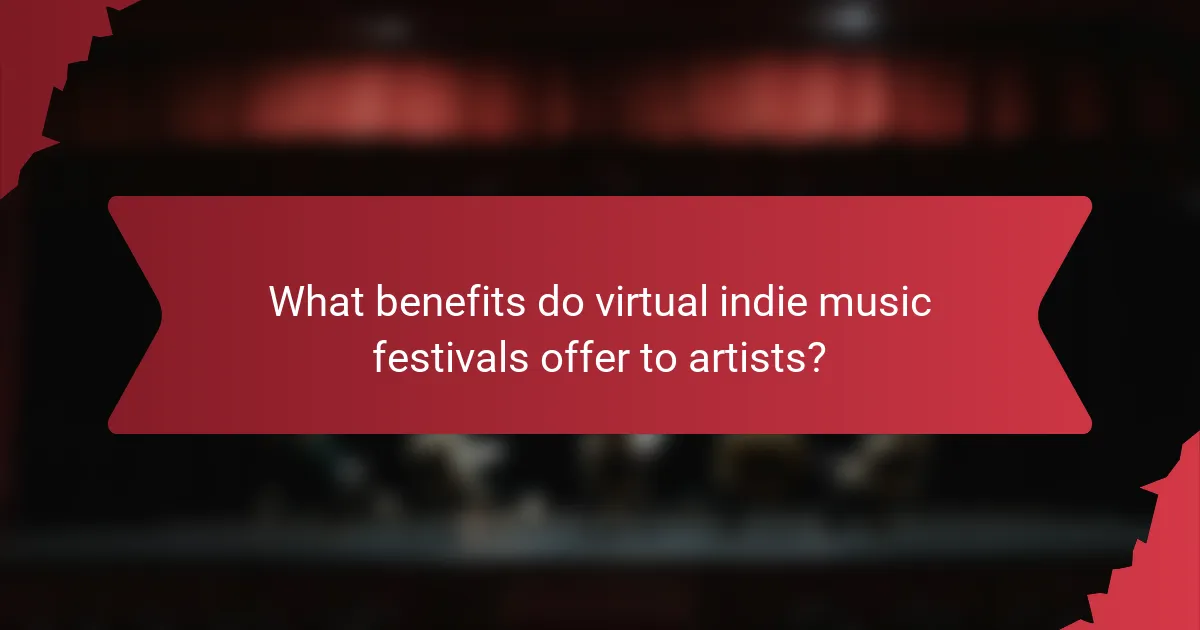
What benefits do virtual indie music festivals offer to artists?
Virtual indie music festivals offer artists increased exposure, broader audience reach, and reduced costs. These events allow musicians to showcase their talent globally without geographical constraints. Additionally, artists can engage with fans through interactive features, enhancing their connection and community building. The unique format of virtual festivals often leads to innovative collaborations and networking opportunities that may not occur in traditional settings.
How do these festivals provide exposure to emerging talent?
Virtual indie music festivals provide significant exposure to emerging talent by connecting artists with global audiences. These platforms often feature diverse lineups, allowing new musicians to showcase their work alongside established acts. Additionally, the accessibility of virtual formats enables participation from a wider range of artists who might not afford traditional festival costs. This democratization fosters a rich environment for discovering unique sounds and styles that might otherwise remain unheard. As a result, festivals play a crucial role in promoting the next generation of musical talent.
What financial advantages do artists experience compared to traditional festivals?
Artists experience significant financial advantages through virtual indie music festivals compared to traditional festivals. Virtual formats reduce overhead costs such as venue rental and logistics, enabling artists to retain a larger share of ticket sales.
Additionally, these festivals often reach a global audience, increasing potential revenue from merchandise and streaming. The flexibility of online platforms allows for diverse revenue streams, including sponsorships and digital interactions. As a result, artists can achieve higher profit margins while engaging with a broader fan base.
How do virtual festivals facilitate collaboration among artists?
Virtual festivals enhance collaboration among artists by providing a platform for real-time interaction and creative exchange. These digital events foster networking opportunities, allowing artists to connect across geographical boundaries. Additionally, they enable collaborative performances, where multiple artists can share the stage virtually. The use of technology facilitates innovative formats, such as joint live-streamed sets, which can attract diverse audiences. As a result, virtual festivals contribute to a vibrant artistic community, promoting creativity and collaboration in ways traditional festivals may not.
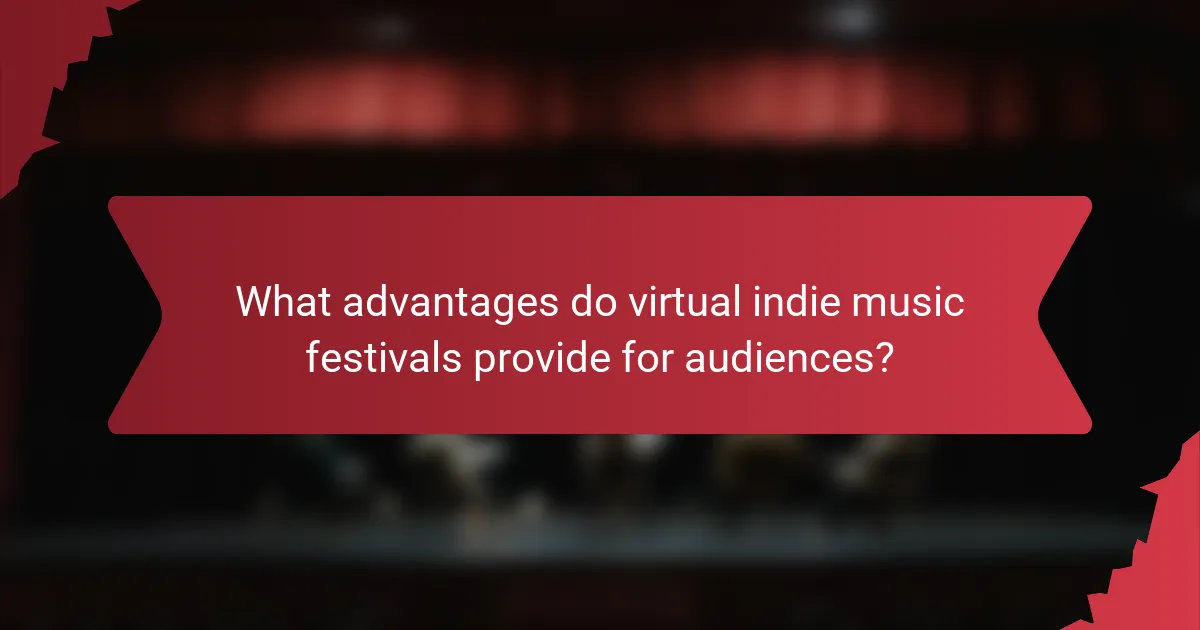
What advantages do virtual indie music festivals provide for audiences?
Virtual indie music festivals provide audiences with accessibility, diverse lineups, and interactive experiences. These events eliminate geographical barriers, allowing fans from around the world to participate. Audiences can enjoy performances from emerging artists and established acts without travel costs. Additionally, virtual formats often incorporate interactive elements like live chats and Q&A sessions, enhancing engagement. As a result, these festivals create a unique community atmosphere that fosters connection among fans and artists alike.
How do accessibility and affordability impact audience participation?
Accessibility and affordability significantly enhance audience participation in virtual indie music festivals. Lower costs and easy access to online platforms attract diverse audiences, increasing engagement. Virtual formats eliminate geographical barriers, allowing global participation. As a result, these festivals can reach wider demographics, promoting inclusivity and community building.
What unique experiences do virtual festivals create for fans?
Virtual festivals create unique experiences for fans through immersive digital environments, enhanced interactivity, and global accessibility. Fans can engage with artists in real-time, participate in live chats, and explore virtual stages. This format allows for diverse performances that may not be possible in traditional settings. Furthermore, the use of innovative technology, such as VR and AR, enriches the viewing experience, making it memorable and engaging. As a result, fans enjoy a personalized festival experience from the comfort of their homes, breaking geographical barriers.
Which demographic trends are shaping audience engagement in different regions?
Demographic trends are significantly influencing audience engagement in virtual indie music festivals across various regions. Younger audiences, particularly Millennials and Gen Z, are driving the popularity of these events due to their digital fluency and preference for unique experiences.
Regions with high internet penetration, such as North America and Western Europe, see increased participation in virtual festivals. These events often feature diverse genres and innovative formats, catering to varied musical tastes.
Moreover, the accessibility of virtual festivals allows for broader audience reach, breaking geographical barriers. Unique attributes like interactive features and community engagement enhance audience satisfaction and loyalty.
As a result, festival organizers are adapting to these trends by incorporating localized content and targeted marketing strategies to engage specific demographics effectively.
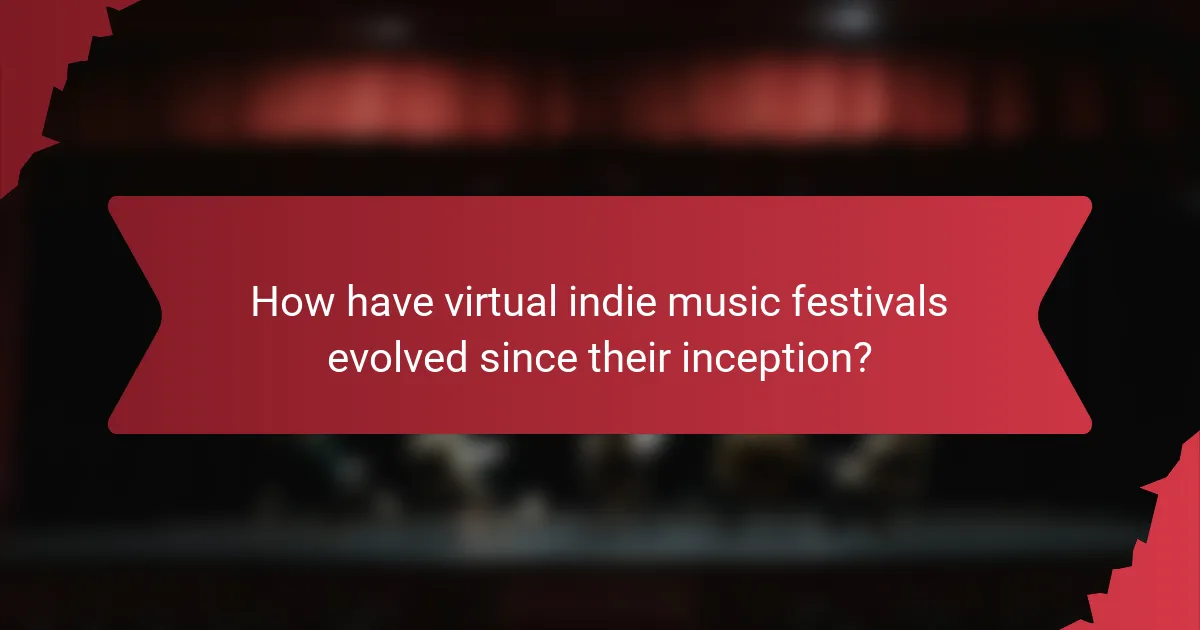
How have virtual indie music festivals evolved since their inception?
Virtual indie music festivals have evolved significantly, offering diverse formats and unique benefits. Initially, they focused on streaming live performances, but now incorporate interactive elements like virtual meet-and-greets and immersive experiences. This evolution enhances audience engagement, allowing fans to connect with artists in new ways. The future prospects include advancements in technology, such as virtual reality, which could further enrich the festival experience.
What technological advancements have influenced their growth?
Technological advancements have significantly influenced the growth of virtual indie music festivals. Innovations in streaming technology enable high-quality audio and video experiences, attracting larger audiences. Social media platforms facilitate community engagement and marketing, enhancing visibility for indie artists. Additionally, advancements in virtual reality create immersive environments, enriching the overall festival experience. These factors collectively contribute to the expanding reach and popularity of virtual indie music festivals.
How has audience behavior changed in response to virtual formats?
Audience behavior has shifted towards greater engagement and participation in virtual formats. This change stems from increased accessibility and the appeal of interactive experiences. Virtual indie music festivals attract diverse audiences, allowing fans to connect globally without geographical barriers. As a result, these events often see higher attendance rates compared to traditional formats. Additionally, audience preferences have evolved towards on-demand content, enabling viewers to experience festivals at their convenience. This trend highlights a unique attribute of virtual formats: flexibility in viewing options.
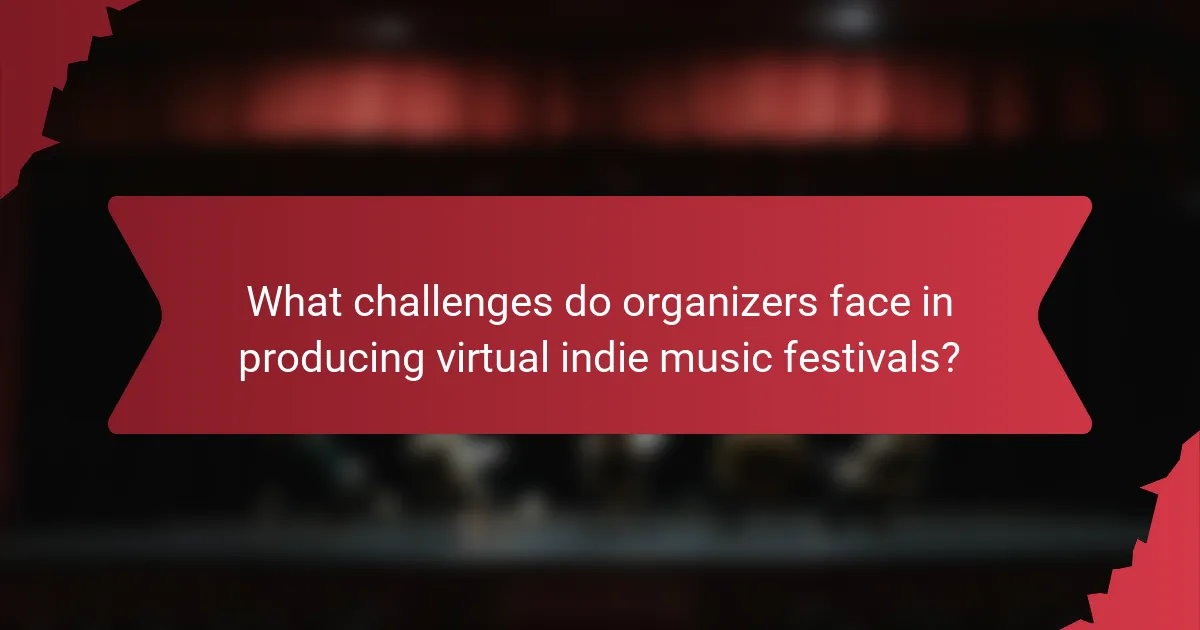
What challenges do organizers face in producing virtual indie music festivals?
Organizers face several challenges in producing virtual indie music festivals, including technical issues, audience engagement, and monetization. Technical difficulties can arise from platform limitations and connectivity problems. Engaging audiences is crucial, as virtual formats lack the atmosphere of in-person events. Additionally, monetization strategies must adapt, as traditional ticket sales may not suffice. These challenges require innovative solutions to enhance the virtual festival experience.
How do technical issues affect the festival experience?
Technical issues can significantly disrupt the festival experience by causing delays, loss of connectivity, and reduced engagement. These challenges can lead to diminished audience satisfaction and impact the overall success of virtual indie music festivals. For example, buffering during live performances can frustrate viewers, while platform outages may prevent access to scheduled events. As a result, addressing technical reliability is crucial for enhancing user experience and maintaining audience loyalty.
What are the common marketing hurdles for promoting these events?
Promoting virtual indie music festivals faces several marketing hurdles. Limited audience engagement can occur due to digital fatigue. Competition from numerous online events makes differentiation challenging. Technical issues during streaming can diminish user experience. Additionally, securing sponsorships may be harder without physical interactions. Finally, measuring success through traditional metrics can be less effective in a virtual context.
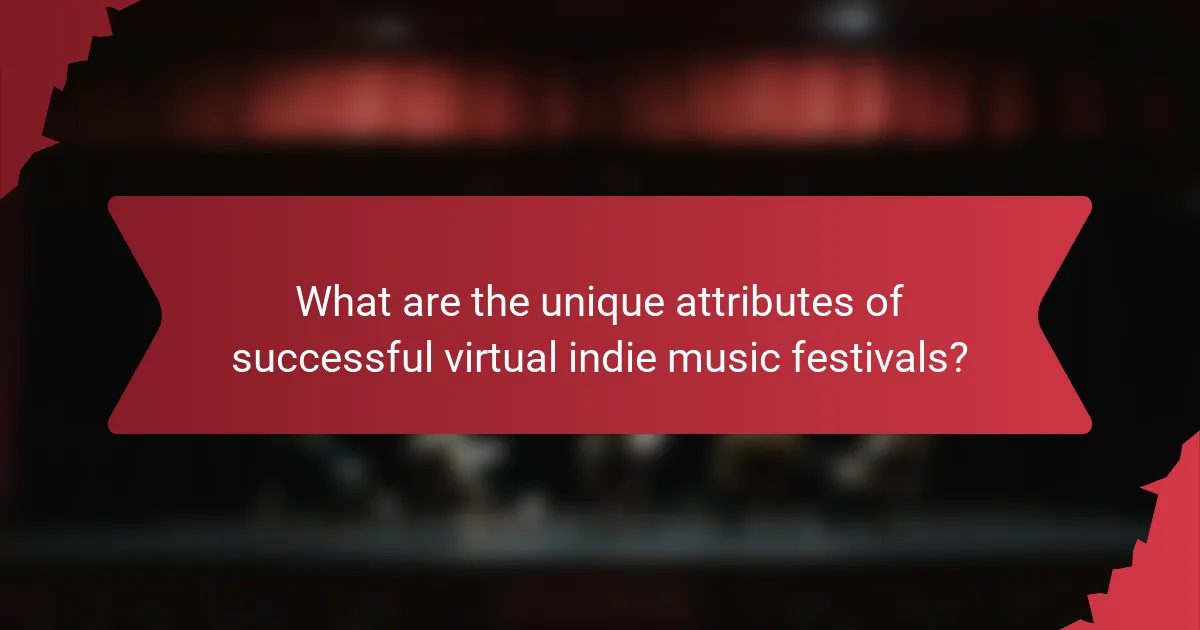
What are the unique attributes of successful virtual indie music festivals?
Successful virtual indie music festivals often feature unique attributes such as innovative interactive platforms, diverse global artist lineups, and tailored audience engagement strategies. These elements enhance accessibility and create immersive experiences. Additionally, unique attributes include real-time audience participation and exclusive behind-the-scenes content, which differentiate them from traditional festivals.
Which innovative elements set certain festivals apart from others?
Innovative elements that set certain festivals apart include interactive virtual experiences, diverse artist lineups, and enhanced accessibility. These features create unique environments that engage audiences globally. For example, virtual reality stages allow immersive participation, while live streaming offers real-time interaction. Additionally, festivals that incorporate gamification elements foster community involvement and enhance user experience.
How do cultural influences shape the programming of these festivals?
Cultural influences significantly shape the programming of virtual indie music festivals by reflecting diverse artistic expressions and community values. These festivals often incorporate local music styles, traditions, and themes that resonate with specific cultural identities. For example, festivals may feature artists from various backgrounds, showcasing unique genres that highlight regional sounds. Additionally, cultural narratives influence the selection of performances, creating a sense of belonging among attendees. This alignment fosters engagement and enhances the overall experience, making festivals a platform for cultural exchange and celebration.
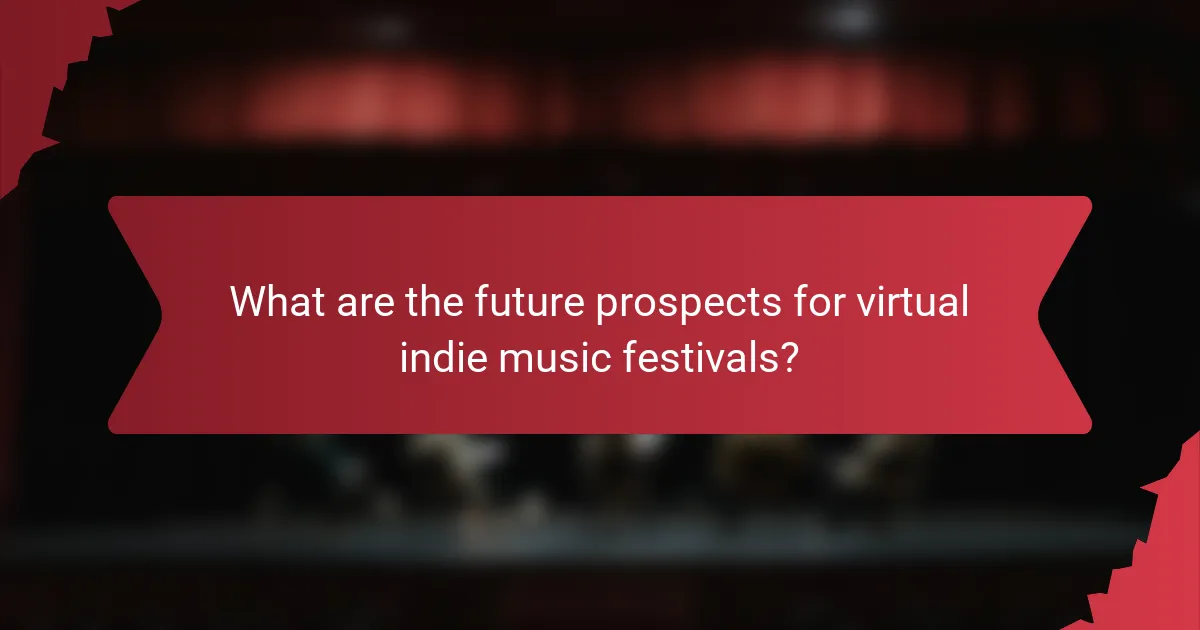
What are the future prospects for virtual indie music festivals?
Virtual indie music festivals are likely to grow due to their accessibility and innovative formats. These festivals break geographical barriers, allowing diverse audiences to engage with artists and each other. Emerging technologies such as virtual reality enhance the immersive experience, attracting more participants. The trend indicates a shift towards hybrid models, combining live and virtual elements, which may redefine the festival landscape. As a result, indie artists can reach wider audiences while maintaining lower overhead costs.
How will hybrid models impact the festival landscape?
Hybrid models will significantly enhance the festival landscape by increasing accessibility and diversifying audience engagement. Virtual indie music festivals allow attendees to participate from anywhere, breaking geographical barriers. These models combine in-person experiences with online platforms, offering unique formats like live-streamed performances and interactive sessions. As a result, festivals can reach wider audiences while providing cost-effective options for artists and organizers. This shift may lead to more innovative programming and collaboration opportunities in the future.
What trends are emerging for 2025 and beyond?
The rise of virtual indie music festivals will shape the music landscape in 2025 and beyond. These festivals offer unique formats that blend live streaming with interactive experiences. They provide benefits such as wider accessibility, reduced costs, and the ability to reach global audiences. Future prospects include the integration of advanced technologies like virtual reality and augmented reality, enhancing audience engagement. As a result, virtual indie music festivals are set to redefine how music is experienced and consumed.
What strategies can organizers implement for sustained success?
Organizers can implement strategies like engaging audiences through interactive platforms, curating diverse lineups, and utilizing data analytics for targeted marketing. These approaches enhance audience connection and drive ticket sales. Additionally, fostering partnerships with sponsors can provide financial stability and expand reach. Emphasizing community involvement creates a loyal fan base, ensuring sustained success in the evolving landscape of virtual indie music festivals.
What best practices should artists and organizers follow to maximize impact?
Artists and organizers should prioritize audience engagement, effective promotion, and collaboration to maximize impact at virtual indie music festivals. Engaging with audiences through interactive elements enhances the experience and fosters community. Utilizing social media and targeted advertising increases visibility and attracts diverse participants. Collaborating with other artists and influencers expands reach and creates unique experiences. These best practices contribute to a successful and memorable festival, ensuring lasting connections and future opportunities.
